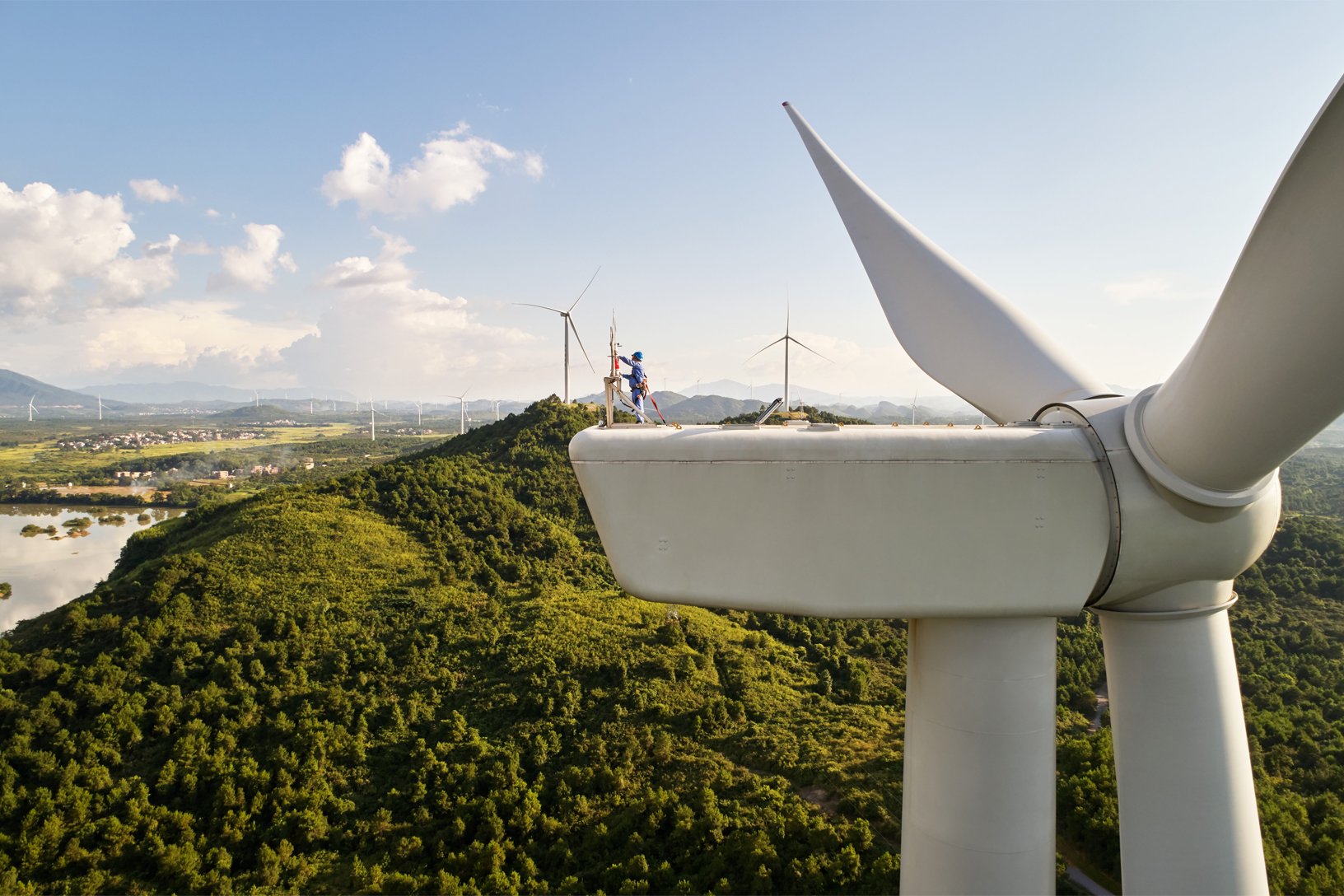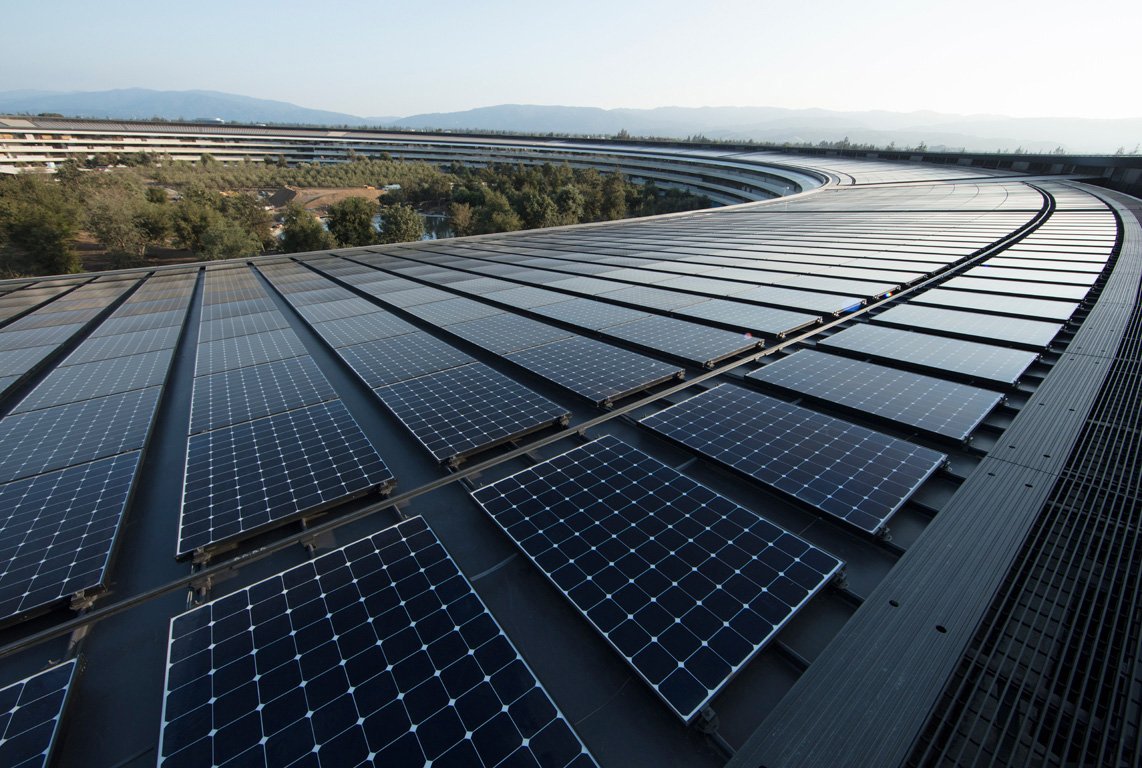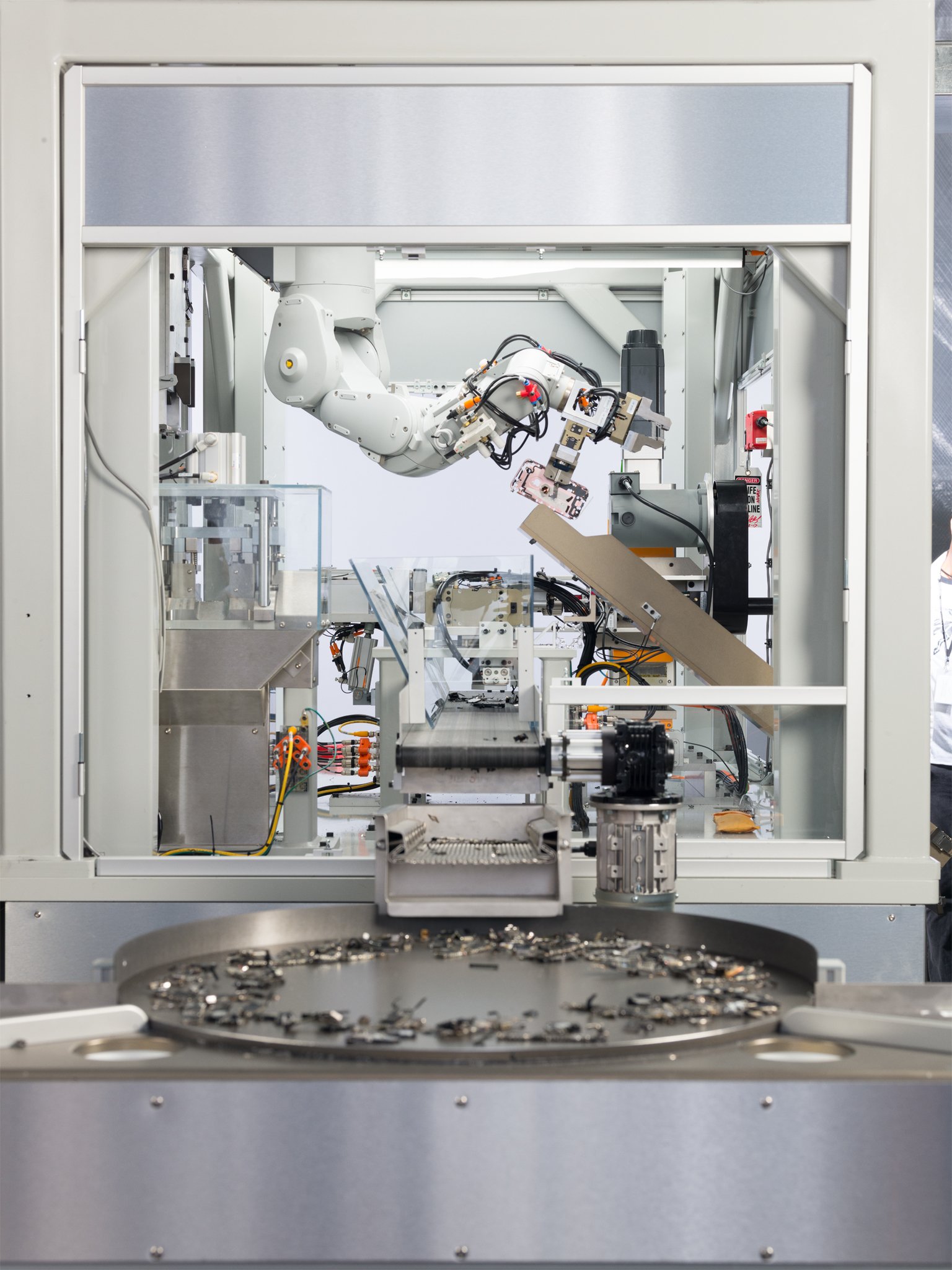Unpacking Apple's mammoth carbon neutral commitment and its new environmental vision

Earlier this week, Apple graced us with a landmark environmental announcement. Apple wants to become carbon neutral by 2030. Not "lower our emissions", not "reduce our e-waste." Carbon. Neutral.
By 2030, Apple hopes that as far as the environment, the earth, and global warming are concerned, it will be as though Apple doesn't exist. As Apple noted, this is a whole 20 years ahead of the Intergovernmental Panel for Climate Change's target of carbon neutrality by 2050, the target that underpins the Paris agreement's commitment and is signed by 195 countries. To put Apple's commitment into further perspective, the EU's commitment is to reduce its greenhouse gas emissions by 40% compared to 1990 levels by 2030, a target it itself describes as "ambitious." Alongside this announcement, Apple released its 2020 environmental report, reflecting on the past year and detailing how it hopes to achieve this target. We read the entire thing, so you don't have to. Here's what we found...
The headlines of the report are straightforward. Apple is committing to total carbon neutrality by 2030.
As mentioned, the headlines of the report are straightforward. Apple is committing to total carbon neutrality by 2030. But, this is only one of Apple's environmental goals. Apple's entire environmental vision can be broken down into three strands; Climate change, resources, and smarter chemistry. Each of these strands in turn has a few main points of focus.
Climate change
The first strand is the most obvious, and the one we were all talking about earlier this week, climate change, of which carbon neutrality is a key part.
Like most companies and governments, Apple will do this through a combination of reduction and offsetting. Apple plans to reduce its own carbon emissions by 75% compared to levels in 2015. It will "balance" the remaining 25% by using "high-quality carbon removal projects" to offset areas of its operation where carbon use is currently unavoidable. Apple's corporate operations, its offices, data centers, business travel, are already carbon neutral, and Apple plans to extend this neutrality to its entire operation, notably its supply chain and product manufacturing. Alongside emissions reduction and offsetting, Apple plans to transition its entire supply chain to 100% renewable electricity by 2030.
Resources
Apple's second strand is resources. Apple is striving to ensure that one day, it will make products using only recycled or renewable materials, creating zero waste. Alongside this, it plans to eliminate plastics from packaging by 2025, minimize its use of freshwater resources where they are scarce, and eliminate landfill waste from corporate facilities and suppliers.
Smart chemistry
The final strand is chemistry, the elimination of harmful chemicals from Apple's products, 100% transparency about chemical use in its supply chain and products, minimal exposure to chemicals that can harm humans or the environment, and the integration of smarter chemistry innovation in the way it builds products.
Master your iPhone in minutes
iMore offers spot-on advice and guidance from our team of experts, with decades of Apple device experience to lean on. Learn more with iMore!
10 years is not a long time to take a business carbon neutral, so it's a good thing Apple has a pretty good headstart.
So what are some of the challenges and pressures in these sectors, and how is Apple doing so far? 10 years is not a long time to take a business carbon neutral, so it's a good thing Apple has a pretty good headstart.
Climate change
Apple's emissions peaked in 2015. Since then, it has reduced its comprehensive carbon footprint by 35%, meaning it's already a long way to one of its key targets. Remember, Apple is only reducing its emissions by 75% from that 2015 level, not 100%. A key part of this is the 100% adoption of renewable energy at all of Apple's corporate facilities, offices, retail stores, data centers, and more. Not only has it switched over to renewable energy, but Apple also says that as of April 2020, its entire corporate operation has been carbon neutral, thanks to investment in the protection and restoration of forests, wetlands, and grasslands.

The products in our hands are changing too. Apple has reduced its carbon footprint of product design by 4.3 million metric tons in the last year, by increasing efficiency, recycling materials, and using low-carbon aluminum in its products. Since 2009, the energy used by Apple devices has reduced by an average of 73%. Not only that, but more than 70 of Apple's suppliers have also already committed to using 100% renewable electricity for the production of Apple products. This last one is very important, because of the 25.1 million metric tons of CO2 released by Apple's operation last year, a whopping 76% of it stems from product manufacturing. Suppliers on board include Apple's big-name manufacturers including Wistron, Foxconn, chipmaker TSMC, and Pegatron, who have all committed since April 2019.
Of the 25.1 million metric tons of CO2 released by Apple's operation last year, a whopping 76% of it stems from product manufacturing.
Apple is also heavily focused on using renewable energy and energy storage, evidenced through investments like its China Clean Energy Fund.
Over the next decade, expect Apple to focus very heavily on reducing the carbon footprint of its product manufacturing process, which accounts for the biggest contribution to Apple's overall footprint massively. This will include pushes to more efficient materials it uses to make its products. In Apple's press release this week, it confirmed that a batch of carbon-free aluminum would be the first used in the manufacturing of its 16-inch MacBook Pro, made by a process that gives out oxygen instead of carbon, a landmark achievement in itself.
Resources
This brings us nicely on to resources. Doing more with less. Apple's products are made with more recyclable material than ever before. In fact, every iPhone, iPad, Mac, and Apple Watch released in the last year was made with recycled content, even the rare earth elements in the iPhone's Taptic Engine. Apple says that in 2019, using recycled elements in products reduced its carbon footprint by 4.3 million metric tons. In the last four years, Apple has reduced plastics in packaging by 58%, and as part of this new commitment, plans to go plastic-free by 2025.
The new robot is called Dave, a rather dull name for a machine that can disassemble the Taptic Engine of an iPhone to recover the materials made to use it like steel and tungsten.
Apple even has a shiny new disassembly robot. Remember Daisy? The new robot is called Dave, a rather dull name for a machine that can disassemble the Taptic Engine of an iPhone to recover the materials made to use it like steel and tungsten. Dave forms a key part of Apple's plan to create a circular supply chain for rare earth elements, with the end goal a future where Apple can make products without ever mining new materials from the ground.

Over the next few years, Apple's customers should begin to notice more and more products boxed in fiber, reducing the plastic wastage in Apple product boxes. Apple's other focuses on resource management include provisions for device longevity and repair, recycling devices at end-of-life, water stewardship, and the preservation of freshwater sources, as well as its move toward zero waste to landfill. On that last point, participating Apple suppliers in Apple's Zero Waste Program have reduced waste by more than 50% in 2019.
Smarter chemistry
More niche, but no less important, is Apple's push to use safer materials in its products. Not only does this mean removing chemicals from products harmful to humans, but also to the environment. To do this, Apple is working to engage its suppliers in building "a comprehensive inventory of chemicals that make up the materials used in our products." Once this is achieved, Apple can assess the risk these may pose to human or environmental health, before deciding how best to tackle the problem. Above and beyond what many other companies are doing, Apple has its very own list of restricted chemicals, which it has used since 2002 to set its own standards for the chemicals that do and do not, make it into Apple products. More recently, Apple has created a new list for its wearable products, recognizing that devices like Apple Watch (and other rumored Apple wearable devices) bring with them their own challenges of skin irritation and sensitizers that can cause discomfort, and even harm to wearers. Over recent years Apple has taken steps to remove harmful chemicals like Lead, Arsenic, Beryllium, Mercury, PVCs, and BFRs from its products.
Aiming high
This is a big set of goals, and it's clear from the 99 (yes, 99) page report that Apple's environmental plan of attack for the next decade is multi-faceted to say the least. If Apple pulls it off, by 2030, Apple will become carbon neutral. Not to be outdone, on the same day Apple announced its plans, Microsoft shared an update on its own even more ambitious commitment to become carbon negative by 2030. Not content with being carbon neutral, Microsoft plans to start contributing to reversing its own carbon emissions, offsetting more than it uses. I wonder if Apple, like a lot of companies, might be giving themselves a bit of breathing room with its neutral, rather than negative target. It would obviously be much easier to spin over-achieving than missing your environmental goals. It might have been preferable for Apple to commit to going carbon negative, but once Apple has gone carbon neutral, that next step will be right within reach.
Why do I care about any of this?
Make no mistake; Apple's environmental plans will impact the devices you buy in a big way in the future.
There are a couple of reasons you should care about what Apple is doing to help the environment. Firstly, this is interesting because it will impact the Apple products that you buy in the future, the packaging will look, feel, and smell different. It'll be lighter, smaller, made of different materials, and each new box will be a reminder of a small contribution that you yourself have made to the environment by buying a device from Apple rather than somewhere else.
If rumors are true, Apple's environmental push could make a big entrance this fall, when Apple announces the iPhone 12. The next iPhone might be the first Apple hero device not to ship with a charging plug inside the box. Make no mistake; Apple's environmental plans will impact the devices you buy in a big way in the future.
Not only that, but as more people wake up to the importance of caring for the environment, shopping responsibly, and reducing our own impact on the planet, people will start to think more and more in an environmental sense about the products they buy. You can see it now in the automotive industry as people invest in electric cars. Whilst brands like Tesla are certainly trendy, a good amount of people will buy these cars because they are mindful of the environmental impact of purchasing a Tesla over any gas-powered car. If Apple can distance itself from its competitors by leading the way environmentally, not only will it hugely benefit the planet, it will also draw more people over time to the brand and its products as people become more conscious about buying products in a way that doesn't harm the planet. It could be that one day, the materials used in a product and its environmental impact are considered as important to some consumers as spec sheets, hardware, and features.
What do you think?
How important is Apple's contribution to the environment to you? And what do you make of Apple's most recent commitment? Where would you like to see Apple do more regarding its impact on the environment, product creation, packaging, shipping, recycling, device repair, and more? Let us know in the comments below, or over on Twitter.

Stephen Warwick has written about Apple for five years at iMore and previously elsewhere. He covers all of iMore's latest breaking news regarding all of Apple's products and services, both hardware and software. Stephen has interviewed industry experts in a range of fields including finance, litigation, security, and more. He also specializes in curating and reviewing audio hardware and has experience beyond journalism in sound engineering, production, and design. Before becoming a writer Stephen studied Ancient History at University and also worked at Apple for more than two years. Stephen is also a host on the iMore show, a weekly podcast recorded live that discusses the latest in breaking Apple news, as well as featuring fun trivia about all things Apple. Follow him on Twitter @stephenwarwick9
